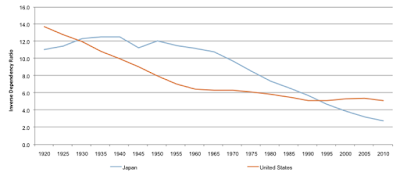By J. Mac Holladay, Founder and CEO
On December 9th, I was fortunate to attend a powerful presentation in Charleston, South Carolina featuring Ken Burns and Dr. Henry Louis Gates, Jr. The title was American Fault Line: Race and the American Ideal. These two icons previewed the new documentaries they are currently working on and participated in a roundtable discussion. The sold out event was held in the beautifully restored Galliard Center in support of the International African American Museum. Ironically, the date of the event was forty years to the day since the first election of Joseph P. Riley, Jr as Mayor of Charleston. After many many great projects, the Museum project is Mayor's Riley's final gift to his community.
As I listened to the two men speak, I thought about the reality that over 40% of all the slaves brought to the United States came to one single wharf in Charleston. That exact location is that place that the Museum will be built. Unlike anything ever envisioned, the Museum will tell the story of those forced to come here as slaves all those years ago. It will tell their story, not only of all they did to build magnificent buildings across the nation as artisans, but the songs and poetry they wrote and how they survived the awful treatment they endured not for decades but for generations. The Museum will chart all that their descendants have done as professionals, elected officials, community and religious leaders as a key part of American history. As Dr. Gates said, "we must take it all in, that is the value of history." The Museum will create a new inclusive American history curriculum for elementary school students and offer continuing education for all who visit.
As many events in 2015 have shown us, racism is not dead. From the over reaction of a North Charleston policeman shooting an unarmed man in the back to the horrible murder of nine people attending a Bible study class at Mother Emmanuel AME Church across the street from the Galliard, we have seen a strange twist in our recent history. Many more negative events have cascaded across the nation all year long. In 2008, many of us had hoped that the election of Barrack Obama as President would change the past. In fact, the reverse has happened. There has been a real increase in blatant racist activities since his second election. As one young African American farmer in Arkansas stated in Paul Theroux’s new book, Deep South, “The Klan don’t wear sheets. They are sitting behind the desks in the banks.” Today, there are 42 million African Americans in the "middle class" and yet 38% of black children live in poverty. Prejudice has consequences every day.
We have only one history in America, it includes all of us. As Mark Twain said, "travel is the enemy of prejudice." So we must share the culture and facts that make us who we are. We must make sure that our children and our grandchildren know all the history of our country. Celebrating black history should not be isolated to a single month, it should be every day, every week, and every month as their history is ours and part of who we all are.
As I listened to the two men speak, I thought about the reality that over 40% of all the slaves brought to the United States came to one single wharf in Charleston. That exact location is that place that the Museum will be built. Unlike anything ever envisioned, the Museum will tell the story of those forced to come here as slaves all those years ago. It will tell their story, not only of all they did to build magnificent buildings across the nation as artisans, but the songs and poetry they wrote and how they survived the awful treatment they endured not for decades but for generations. The Museum will chart all that their descendants have done as professionals, elected officials, community and religious leaders as a key part of American history. As Dr. Gates said, "we must take it all in, that is the value of history." The Museum will create a new inclusive American history curriculum for elementary school students and offer continuing education for all who visit.
As many events in 2015 have shown us, racism is not dead. From the over reaction of a North Charleston policeman shooting an unarmed man in the back to the horrible murder of nine people attending a Bible study class at Mother Emmanuel AME Church across the street from the Galliard, we have seen a strange twist in our recent history. Many more negative events have cascaded across the nation all year long. In 2008, many of us had hoped that the election of Barrack Obama as President would change the past. In fact, the reverse has happened. There has been a real increase in blatant racist activities since his second election. As one young African American farmer in Arkansas stated in Paul Theroux’s new book, Deep South, “The Klan don’t wear sheets. They are sitting behind the desks in the banks.” Today, there are 42 million African Americans in the "middle class" and yet 38% of black children live in poverty. Prejudice has consequences every day.
We have only one history in America, it includes all of us. As Mark Twain said, "travel is the enemy of prejudice." So we must share the culture and facts that make us who we are. We must make sure that our children and our grandchildren know all the history of our country. Celebrating black history should not be isolated to a single month, it should be every day, every week, and every month as their history is ours and part of who we all are.
























